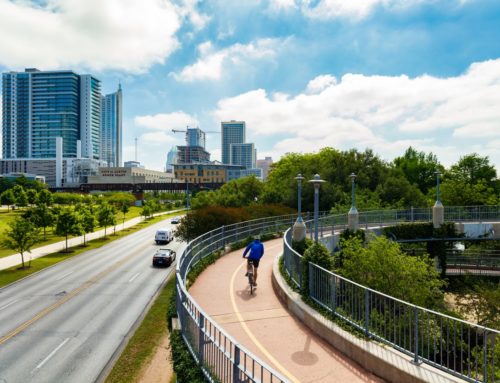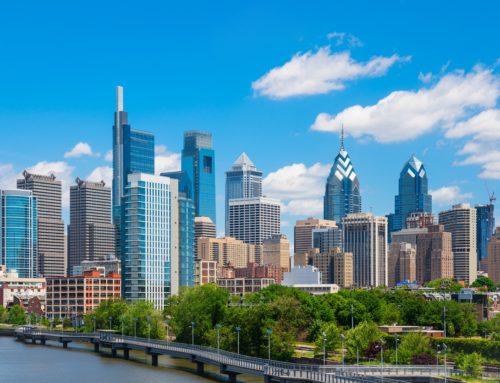Thanks to advocacy efforts across the country, the number of bicyclists on American roads has increased substantially over the past decade. As more riders are on the road, the likelihood of bicycle-related accidents increases. While many cities have taken steps to make roads a safer place for bicyclists, others have not. Until all cities embrace bicycle culture and initiate changes to the infrastructure, bicycle-related accidents will continue to be problematic.
Overview of Bicycle Accidents in the United States
Statistics show that while the overall number of bicycle accidents in the country is declining, the number of fatal bike accidents is on the rise. In 2015, there were 45,000 reported bicycle accidents in the United States, down from 50,000 reported accidents in the prior year. However, the number of fatal accidents increased by more than 12 percent during this same time.
Overall Decline in Bike Accidents
If more bicyclists are on the road than ever before, why are bicycle accidents happening less frequently? The answer may be due to the fact that advocacy groups have been successful in getting towns and cities across the country to embrace the bicycling culture.
An increasing number of cities have added safety features – including bike lanes and protective medians – to its existing infrastructure,” says Sherwin Arzani, an attorney who handles bicycle accidents in Los Angeles, CA. Others have also ramped up efforts to engage the community about bicycle safety.
Drivers are encouraged to be alert of bicyclists and careful when sharing the road. Bicyclists have more information available to them about their legal obligations on the road and how they can help to prevent bike accidents.
Significant Increase in Fatal Bike Accidents
Fewer bike accidents are happening on American roads. However, a larger percentage of these accidents tend to be fatal. Why?
Reasons that the number of fatal bike accidents has risen include:
- New bicyclists are less familiar with safe biking practices
- Drivers are not using caution when sharing the road with bicyclists, and
- Cities are planning, but have not implemented changes to infrastructure to support bicyclist safety.
Urban Bicycle Accidents
Statistics show that urban bicycle accidents (1) tend to happen more frequently and (2) result in more serious injuries. In fact, approximately 70 percent of all fatal bike accidents happen in our nation’s cities. Cities tend to have much more heavily-traveled roads and less flexibility to install bicycle safety features than suburban and rural areas.
Most Dangerous Cities for Bicyclists
Statistics show that the following cities tend to be the most dangerous for bicyclists:
- Albuquerque, NM
- Tucson, AZ
- Las Vegas, NV
- Phoenix, AZ
- San Jose, CA
- Columbus, OH
- San Francisco, CA
- Memphis, TN
- Philadelphia, PA
- Los Angeles, CA.
Most of these cities have seen a staggering increase in the number of bicyclists on the roads. San Francisco, for example, saw a 13 percent increase in riders between 2011 and 2016. The number of riders in Albuquerque has risen by more than 46 percent since 2000.
Safest Cities for Bicyclists
Smaller cities tend to reflect a decline in both the number and severity of bicycle accidents. Statistics show that the safest cities for bicyclists include:
- Oklahoma City, OK
- Boston, MA
- Dallas, TX
- Indianapolis, IN
- Fort Worth, TX
- Seattle, WA
- Detroit, MI
- Fresno, CA
- San Diego, CA
- Portland, OR.
Many of these cities have been persuaded by bicycle safety advocacy efforts and implemented positive changes on city streets. In Portland, OR, for example, the city did a major overhaul of its bike infrastructure for a fraction of the cost of repairing or replacing one mile of urban highway. The city installed more and better bike parking, striped more bike lanes on busy highways, and added traffic calming measures to reduce the speed of traffic. The city has seen a surge in biking popularity and intends to continue to make roads safer for cyclists.
Common Causes of Bicycle Accidents
Advocacy efforts will be most successful if we understand why bicycle accidents tend to happen. Statistics show that these are some of the most frequently cited causes of bicycle accidents in the United States:
Driver Inattention: Drivers are becoming increasingly more distracted behind the wheel. According to the National Highway Traffic Safety Administration (NHTSA), 30 percent of all bicycle accident injuries occur when a bicyclist is struck by a car. Drivers who are not paying attention are more likely to collide with bicyclists.
Failure to Yield: Unfortunately, many drivers and bicyclists are not fully aware of their responsibilities on the road. Who has the right of way at an intersection? When must a driver yield to a bicyclist on a roadway? When a driver fails to yield to a bicyclist, accidents are more likely to occur.
Rider Inattention: Bicyclists have little protecting them from serious injuries. In order to minimize the risk of harm, riders must exercise extreme caution when sharing the road with larger vehicles. Riders are more likely to be injured in an accident if they are distracted. An increasing number of riders are utilizing hands-free cell phone devices and/or wearing headphones. This behavior can cause a bicyclist to become distracted, veer into oncoming traffic, or fail to maintain the bicycle lane.
Dangerous Road Conditions: Cities have an obligation to ensure that all roadways – including dedicated bike lanes – are maintained and in good condition. However, according to the NHTSA, 13 percent of all injury-causing bicycle accidents are caused by roads that are not in good repair.
Riding at Night: More than half of all bicycle accidents happen when it is dark outside. Cyclists who do not wear reflective gear while riding are more difficult to see at night. Drivers may not be able to see riders in time and have the ability to stop the vehicle before a crash.
How to Reduce Bicycle Accidents
How can cities across America help to ensure the safety of the rising number of bicyclists hitting the road? Advocacy efforts should encourage education efforts and changes to infrastructure.
Education Efforts
Cities can help to keep riders safe by implementing educational programs and making safety information readily available. Education efforts that have proven to be successful in cities across the country include:
- Offering bicycle safety courses
- Distributing materials about driver and bicyclist responsibilities, and
- Implementing educational programs for children and students.
Safer Infrastructure
How can cities change their roads and highways to increase bicyclist safety? Cities such as Portland, OR have found that the following efforts have been successful:
- Striping dedicated bike lanes
- Linking gaps in existing bicycle networks
- Installing traffic-calming measures
- Installing bicycle wayfinding signs
- Paving buffered bike lanes adjacent to busy highways
- Constructing more and better bike-parking facilities
- Blazing off-road bike paths, and
- Striping “bicycle boxes” at intersections to increase rider visibility.
Biking will continue to become more popular in the United States. You can help to keep cyclists safe by advocating for bike-safety initiatives in your local city.


















[…] Diego is one of the safest cities for bikers. According to PPM, Bike and Walk Alliance, San Diego comes in at number nine for safest cities to bike in. Meanwhile, three other California […]